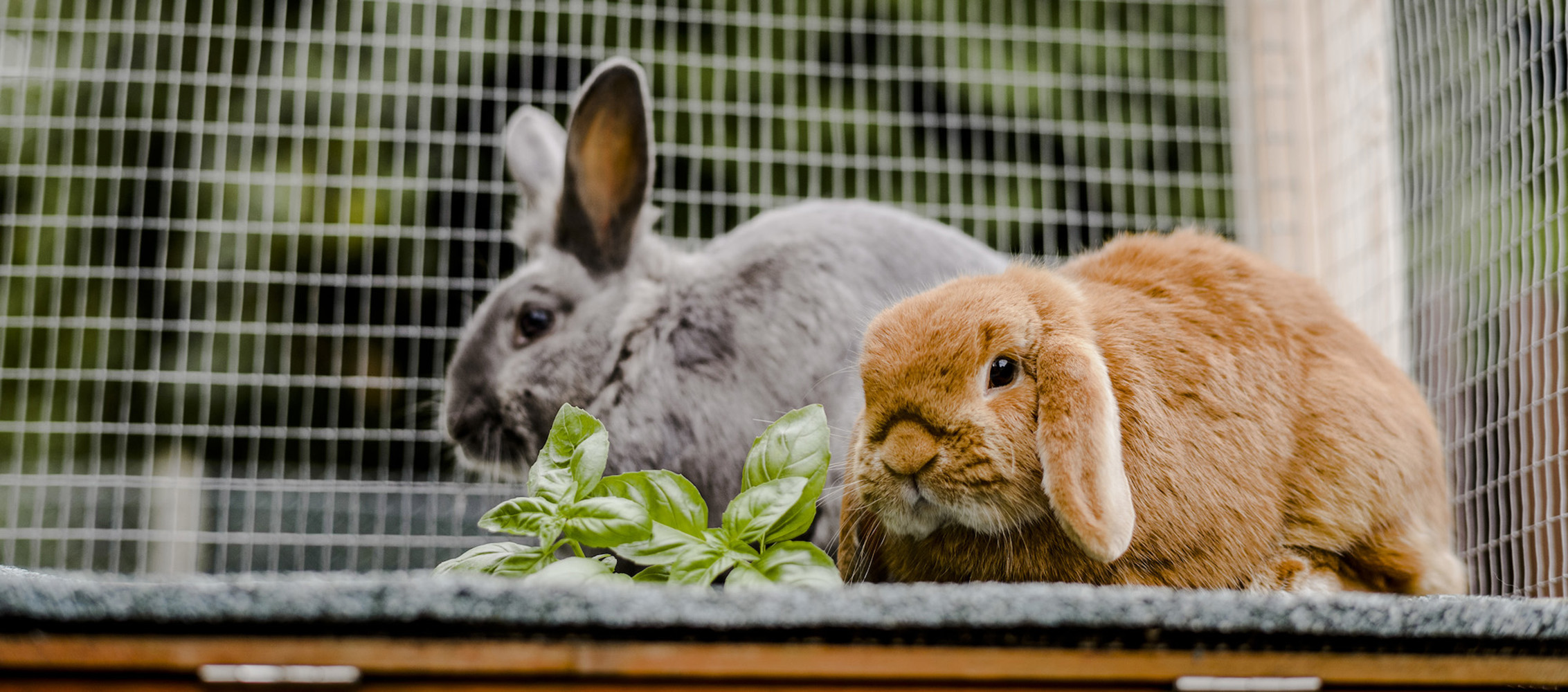
How to keep your rabbits cool in the summer heat
Keeping your rabbit cool in the summer is essential to preventing heatstroke.
While many animals are able to regulate their own body temperature, rabbits need extra help to stay cool. Wild rabbits will burrow underground on hot days to avoid the heat of the sun. Domestic rabbits do not often have the option to burrow, and some breeds have very thick fur.
Important
Do not encourage your rabbits to swim or submerge them in cold water. The shock can prove to be fatal.
What temperature is too hot for rabbits?
Temperatures above 25 degrees celsius are too hot for rabbits and can increase the risk of heatstroke. Keep monitoring the weather and bring your rabbit indoors if the temperatures rise.
What should I do if my rabbit suffers heatstroke?
If you suspect your rabbit is suffering from heatstroke, do not submerge your them in cold water as the shock can be fatal. Instead, dampen their fur and ears with cool water and seek veterinary attention immediately.
How to keep rabbits cool
Provide plenty of shade
Move your rabbits’ hutch and run out of direct sunlight – a gazebo or sun sail placed over the hutch can create a shaded area. You may even choose to move them indoors, but it’s important to provide plenty of shade for your rabbit. Wooden hutches can get very hot and should never be left in the sun.
Offer lots of water
Your rabbit may drink more water than normal during the summer. Make sure there are plenty of fresh water sources available, including both bottles and bowls. You can add a couple of ice cubes to water dishes to keep the water cool, and offer vegetables soaked in water to keep your rabbit hydrated.
Place ceramic or slate tiles in their run
Rabbits like to stretch out during hot days to prevent their body from retaining too much heat. Place ceramic or slate tiles in the shade for your rabbit to lie down on, as these will stay cool. If you have space you can also cool them in the fridge for an hour before placing them in the run.
Frozen water bottles
You can also freeze a large bottle of water and wrap it in a tea towel, then place it where your rabbit can lie down. Or, instead of a frozen water bottle, use ice packs. Similarly to ceramic tiles, they create a cool surface for your rabbit to relax on.
Provide a damp towel
Hanging a damp towel on the rabbit run can provide extra shade, while also creating an evaporative cooling effect. Do not cover the entire run as this will prevent a cooling breeze.
Dampen your rabbit’s ears
Since rabbits lose heat through their ears, you can lightly dampen them to speed up the cooling process. If your rabbit is comfortable with it, you can use a spray bottle to mist their skin, or simply use a wet cloth or your hands to dab their ears.
Groom your rabbit
Rabbits shed their fur seasonally, but this process can take some time. By grooming your rabbit often, you’ll help them shed excess fur while also strengthening your bond. Long-haired rabbits – such as angoras – should be brushed daily, and trimmed by a vet or professional groomer several times a year. Trimming their fur will also make it easier to check your rabbit for fly strike and keep them clean.
How to keep indoor rabbits cool
While house rabbits may not be exposed to direct sunlight, a warm house can still be too hot for them. To keep your house rabbit cool in the summer, there are some tips you can try.
Create a breeze
Open a window to allow plenty of air circulation and breeze, or turn on air conditioning if you have it.
Use a fan
Providing a fan can keep the air cool in your rabbit’s room. Do not blow the fan directly onto the rabbits, and ensure they have enough room to move away if they wish. Keep wires out of reach to prevent chewing on electrics. If it’s very hot indoors, you can place a cold, wrung-out towel on top of the run in the direction of the fan. As the fan blows, the towel creates an evaporative cooling effect.
Relocate to a cool room
Move your rabbit from conservatories and into a cooler room. Glass buildings and wooden sheds can heat up very quickly, making them dangerously hot for rabbits. Take note of the coolest rooms in your home, and relocate your rabbit when necessary.
Reduce sunlight
Closing curtains will prevent sunlight from heating up your rabbit’s room. Basements are usually a good option as there are often no windows, and heat rises to the top of the house.
What are the risks of hot weather for rabbits?
Fly strike in rabbits
Fly strike is more common during the summer months. Fly strike happens when flies lay eggs in fur, and maggots feed on the rabbit. This can result in fatal wounds and illness.
Dirty, wet bedding or soiled fur provide the perfect environment for flies to lay eggs – during hot weather, flies are especially drawn to these warm environments. In the summer, it’s essential you check your rabbit for symptoms of fly strike at least twice a day.
Look out for these signs of fly strike:
- Lack of energy
- Loss of appetite
- Open wounds or sores
- Loss of fur
- A bad smell
- Visible maggots
Note
Rabbits that have difficulties keeping themselves clean – due to old age, arthritis or dental problems – are at higher risk of fly strike. Make sure your rabbits and their bedding is clean at all times.
Heatstroke in rabbits
Heatstroke is a serious condition and can progress very quickly, often making it fatal for rabbits. While rabbits often hide the signs of illness, it’s important to monitor them for symptoms of heatstroke.
The signs of heatstroke in rabbits are:
- weakness and lethargy
- panting
- warm, red ears
- salivating
- confusion
- convulsions
If you suspect your rabbit is suffering from heatstroke, do not submerge them in cold water. Instead, contact your vet immediately. Put them on top of a cold, wet towel and create a breeze. Then gradually dampen their ears with cool water.
Page details
Reviewed
• 24 May 2023
Next review
• 25 May 2026







